Last Updated on June 29, 2022 by Rebecca Huff
Let us challenge ourselves to clean our homes using safer alternatives. We are going to learn how to avoid the cleaning methods that use toxic chemicals that are so dangerous we have to keep them in a locked cabinet.
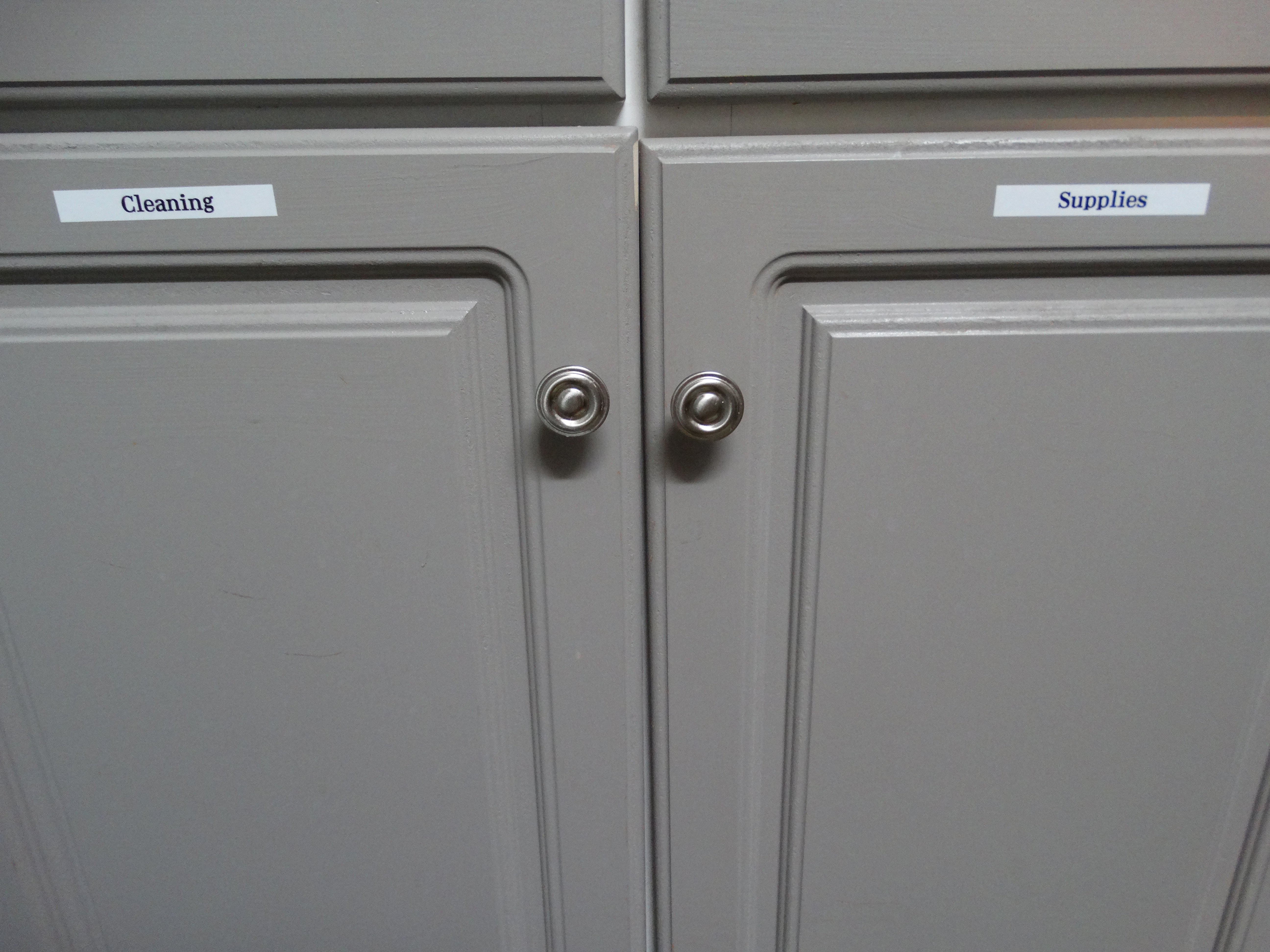
Let me help explain how to avoid the cleaning methods that use toxic chemicals. First, watch for clues to toxic products on labels when buying cleaners and avoid anything stronger than “Caution!”
While there are options for those of us who would prefer to reduce or even eliminate toxins from our cleaning routines, we can also use inexpensive ingredients to make our cleaning solutions. (Always test a small patch first with all products in an inconspicuous area)
Distilled white vinegar
Because vinegar is useful for dissolving grease, dirt, soap, scum, mineral deposits and can be used to eliminate odors. While it packs a powerful punch in knocking out a cleaning project, it is also completely safe and non-toxic, which is crucial when you have children and pets! Very large jugs of distilled white vinegar can be purchased at Costco inexpensively.
Here's how I use Vinegar in my home:
Glass cleaner
In a glass spray bottle, I mix 1/4 cup vinegar, 1/2 teaspoon liquid soap or detergent, a drop of lemon essential oil (0ptional) and 2 cups of water in a spray bottle. Shake to blend and spray on your windows!
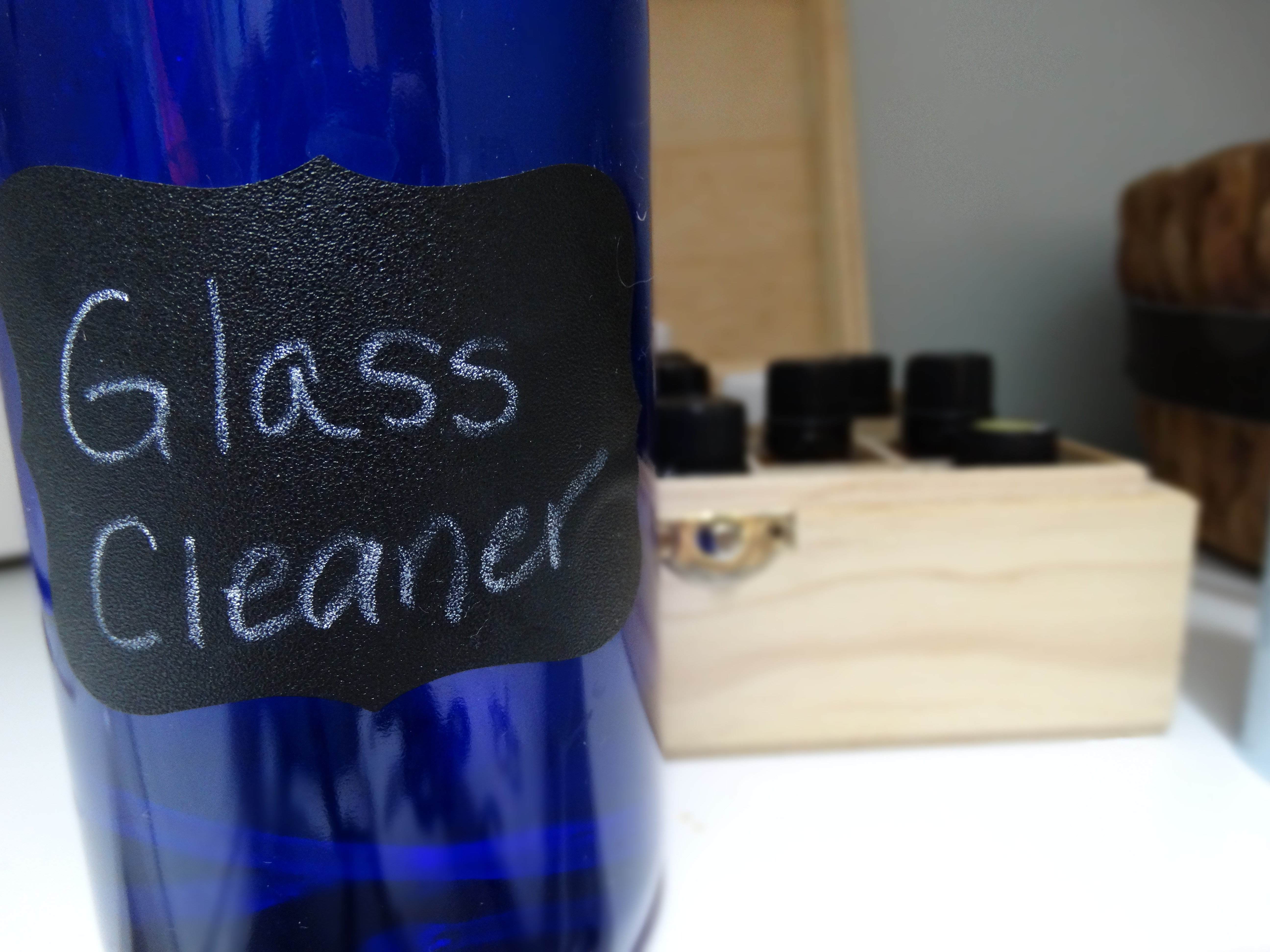
Bathroom tile, floor tile, backsplash tile, etc.
Mix ½ cup vinegar with ½ tsp. All-Purpose liquid detergent and 2 cups very hot tap water. Combine in a spray bottle and mix well. Spray on then rinse with a sponge.
All-Purpose Vinegar Cleaner
Combine 3 Tbsp. white vinegar, ½ tsp. washing soda, ½ tsp. dish soap and 2 cups hot water in a spray bottle. If you want to get fancy, add a drop of essential oil. Shake and spray! (It's recommended not to use vinegar on granite countertops or stone tiles as it can erode the surface over time.
Clean Wood Floors with Vinegar
Mix 3 – 4 tsp. Almond oil or Jojoba oil with 1 cup apple cider vinegar to clean and shine natural wood floors. My entire house is wood floors except for the kitchen and bathrooms, so I use this recipe a lot. I prefer the smell of almond oil.
Laminate and other Floor Cleaner
Mix ½ cup white distilled vinegar with ¼ cup of liquid detergent and 2 gallons of warm water. Mix well in a bucket and mop.
Another tip to keep floors cleaner is to stop wearing shoes in the house. Think of all the places you walk in your shoes on a daily basis and realize all the bacteria you carry on the bottom of your shoes. It's easier to keep floors clean when you leave the shoes at the door.
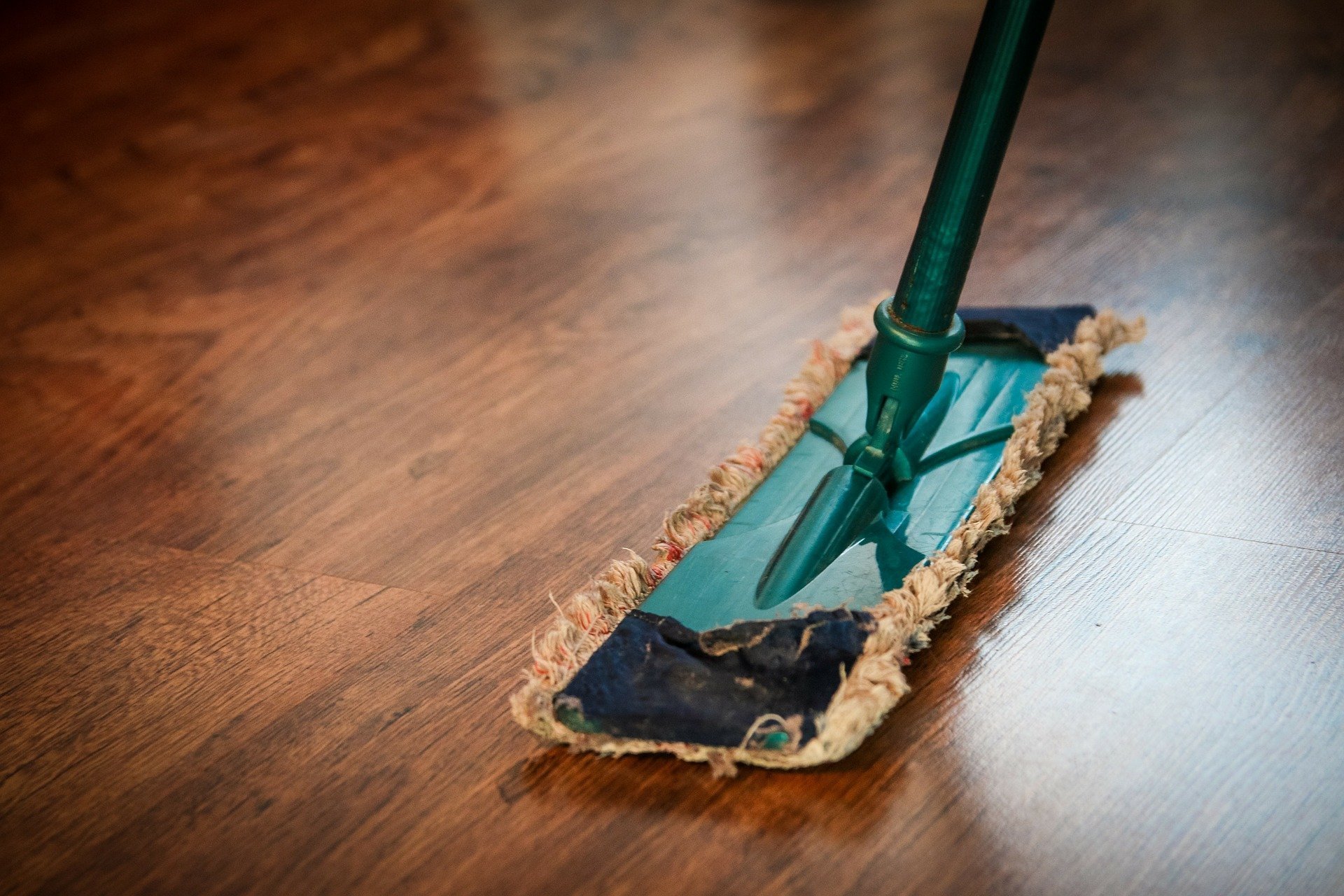
Toilet Cleaning
Pour equal parts baking soda and vinegar in the toilet bowl. Wait several minutes for fizzing to stop, then scrub and flush. Simple as that. I keep a large jar of baking soda in my laundry room that I have premixed a few drops of peppermint into. Much better than using toxic fragrances in the bathroom clean up projects!
Baking Soda
Baking soda can be an adequate replacement for harsh scouring powders that is mildly abrasive and naturally deodorizing. Baking soda is another item I buy in bulk at Costco.
Clean Your Kitchen Sink with Baking Soda
Clean stainless steel sinks with a paste of baking soda and vinegar. Mix it up and apply with a brush or sponge. I keep a jar of baking soda with a few drops of tea tree oil or lemon essential oil in a shaker jar next to my sink that I use every night as my last step in the kitchen clean-up-process.
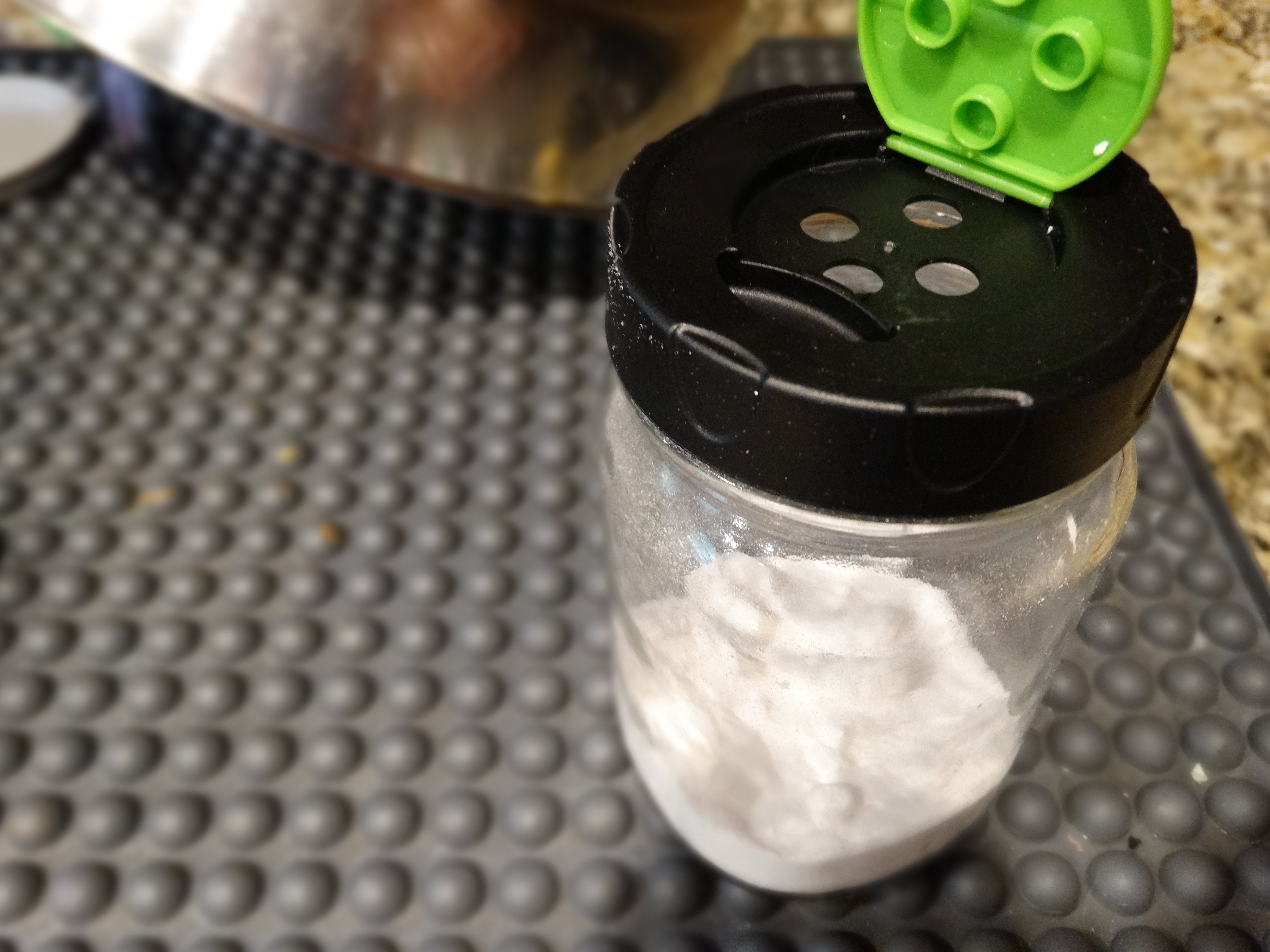
Clean Your Shower with Baking Soda
Create a scrub paste from baking soda and water to clean soap scum in tubs and showers. It's very effective. Keep a shaker jar handy and clean the shower often to avoid buildup.
Odor Control
Some people try sprinkling baking soda in the bottom of garbage bags to control odor. I use it in my litter boxes to reduce odor. It's pet safe, so don't worry. If you are looking for a product that is specifically designed to eliminate litter box odor, try Odor Klenz Pet Litter Additive.
Moisture Control
In places where moisture is a problem, just place a bowl of baking soda. Every so often give the baking soda a shake or stir to keep it working.
Remove Laundry Stains with Baking Soda
Make a paste using baking soda and water then work the mixture into stains before washing. For perspiration stains, let the paste set for about an hour before washing. I soak our gym clothes in baking soda (on the soak setting) before running the wash cycle to remove odors. Removing odor is especially important if you are not using laundry detergent and dryer sheets full of fragrance that covers up odors. No smell is clean “outdoor fresh scent” is chemicals. Wool dryer balls with a few drops of your favorite essential oil will keep your clothing soft. Doing so will also keep them smelling lovely right out of the dryer.
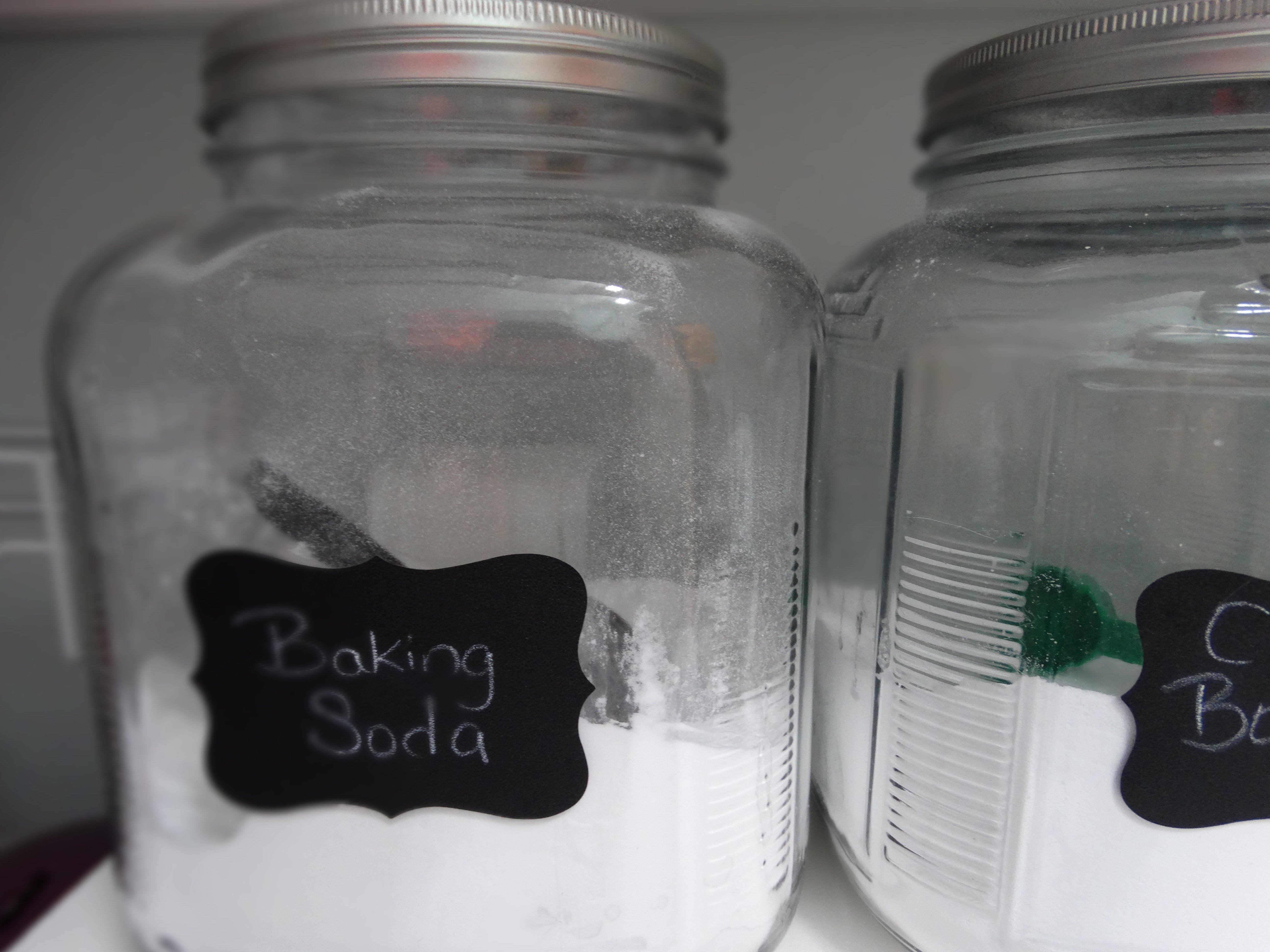
For low-waste laundry cleaning, try Dropps Laundry Pods to deal with tough stains, nasty odors — they pack a powerful stain fighting punch.
Lemon Juice
Lemon juice is an ingredient we usually have in our kitchens, and it makes a fine cleaner! Lemon juice cuts grease, freshens, deodorizes, and fights household bacteria.
After squeezing the juice from lemons, I will put half of one down the garbage disposal and turn it on with cool water. It leaves behind the most wonderful fresh scent. You can do this any time you use a lemon or lime – just save it for after you clean the kitchen and last of all, run it through the garbage disposal. All natural freshener!
In the kitchen
To clean the microwave, heat a bowl of water and lemon slices in your microwave for a minute, then wipe with a cloth or sponge. Stains will be easier to remove, and it neutralizes food odors.
I also rub lemon juice into my wooden chopping board letting it soak for several hours or overnight and then rinse well. Wood chopping boards appear to have anti-bacterial properties anyway, but the lemon will help kill off any remaining germs plus neutralize odors. Remember with wood cutting boards to rub them down with oil to keep them from drying out.
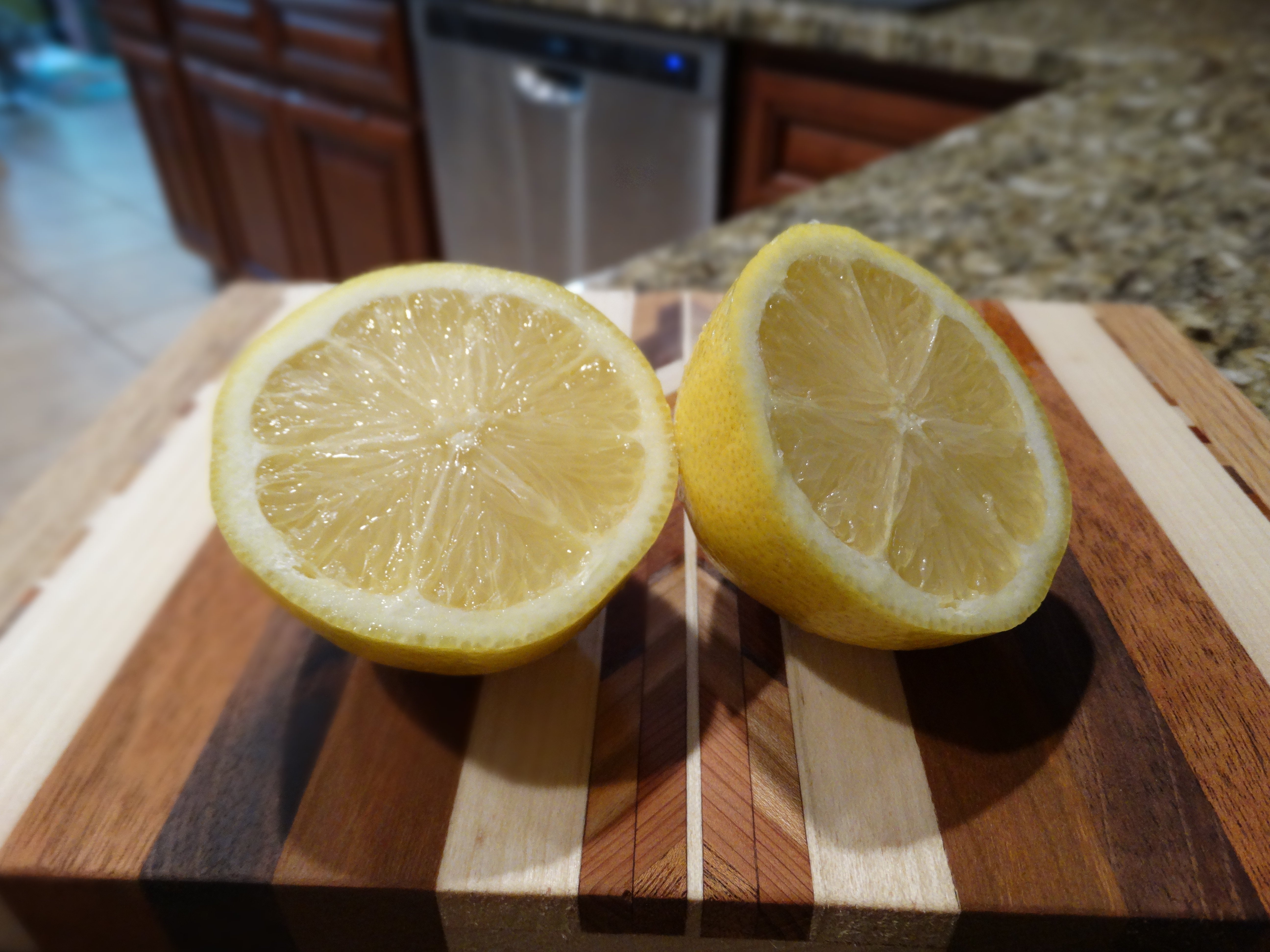
Hard Water Scale Remover
Spray fresh lemon juice on hard water scale build-up near faucets. Rinse after 10 minutes. Green cleaning has never been easier.
Odor Control
Half a lemon left in your fridge, uncovered, will help control and eliminate offensive smells.
Castile soap
Castile soap, like Dr. Bronners, is a fantastic all-purpose cleaner for around the house. Castile is useful in cleaning recipes that call for soap. A word of warning, mixing Castile soap and vinegar doesn't work, they actually cancel each other out, so it is best to clean with the Castile soap and then follow up with a vinegar rinse.
Borax
Borax is useful for cleaning, disinfecting, deodorizing, and also eliminates ants!
Hydrogen Peroxide
Hydrogen peroxide (3%) a natural anti-bacterial, whitener, and mold cleaner. I keep a bottle in my laundry room for removing blood stains. I always use hydrogen peroxide instead of bleach in my laundry room. Whiten delicate lace, sheets, or undershirts by soaking in hydrogen peroxide.
An excellent way to disinfect surfaces is by spraying them with vinegar, then following up by spraying on 3% peroxide. Wipe clean. It is not difficult and takes only a couple minutes.
You can also use hydrogen peroxide to clean your fruits and vegetables by adding a quarter cup to a sinkful of water then adding veggies. For cucumbers or apples that have been waxed, I use a scrub brush or loofah or peel.
If you use sponges, soak them for 10 minutes in a 50/50 mixture of hydrogen peroxide and warm water to disinfect. Rinse the sponges thoroughly afterward. Soak toothbrushes in hydrogen peroxide to disinfect when there is an illness in the family.
Speaking of illness, hydrogen peroxide can be sprayed on door knobs, light switches, remote controls, toys and other frequently touched items if there is an illness you want to prevent spreading in your home. Because hydrogen peroxide is not a lung irritant it is safe around kids, elderly, and pets.
Grout in the bathroom tile can be cleaned by applying hydrogen peroxide directly then scrubbing with a small narrow brush, try using an old toothbrush. Do this every time you clean your bathroom and before long the grout will look new again.
Essential Oils
I can go into greater detail in a future post but four of my favorite essential oils for cleaning are listed below.
Peppermint
Peppermint oil is great for creating a fresh smell but it also has antibacterial properties. This makes it a great part of the natural cleaning toolbox! I keep a bottle of peppermint glass cleaner in my bathrooms to clean the glass as it leaves behind an invigorating scent in addition to slashing bacteria hiding there! Peppermint is also a deterrent for pests.
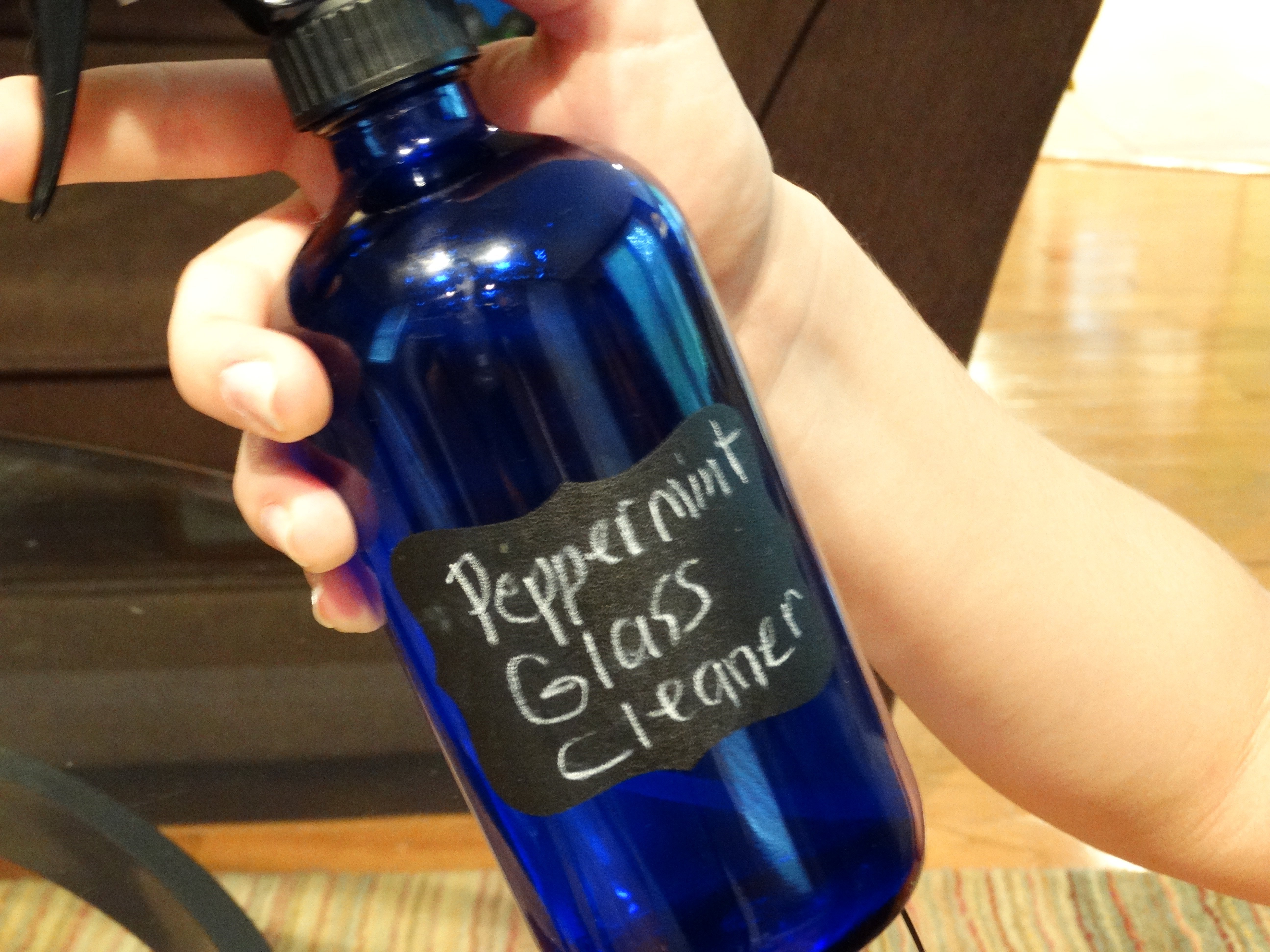
Lavender
Make an Anti-bacterial spray using water and pure essential lavender oil. Mix 1 cup water and one teaspoon lavender oil in a spray bottle and shake to mix. Spray and wait 15 minutes before wiping or don’t rinse at all.
Nothing beats the smell of lavender in your dryer! Not only does this little tip make my clothing smell wonderful, it also emits a nice aroma while I am drying clothes.
Tea Tree Oil
Tea tree oil is great for repelling bugs. When my children are in school I keep a spray bottle near the door and give their backpacks, shoes, and jackets a quick spray before they leave. This helps to prevent the spread of lice. Adding a few drops to their shampoo bottle can also help.
I keep a bottle of tea tree oil near my washer and add a few drops in the detergent compartment with each load to help remove odors.
Adding tea tree oil to the all-purpose vinegar spray can boost the disinfectant properties of the spray.
Though some people say they use diluted tea tree oil on their pets, it is potentially toxic, so I suggest avoid using tea tree oil around your cats and dogs.
Lemon oil
Most furniture polish sprays contain carcinogens. Therefore, I prefer to polish my wood furniture with ½ cup of sweet almond oil and 10 to 15 drops of lemon oil (you can substitute olive oil as well) rubbing the mixture into the wood to bring out the natural beauty with zero toxins. Lemon oil also makes a delightful air freshener, use it in place of other essential oils in the recipe at the bottom of this post.
Battling Mold
If mold is a problem in your home, try using natural remedies instead of adding to the problem by using harsh chemicals. Try mixing liquid dish soap with one teaspoon borax to a quart of warm water. You can then soak moldy areas with the mixture, rinse, allow to air dry.
Another remedy is to add about twenty drops of grapefruit seed extract to two cups of water and spray then let air dry.
Tea tree oil is a natural antimicrobial that attacks mold, try mixing a teaspoon of it with two cups of water in a spray bottle, spray and let air dry.
Baking soda is great at fighting mold. Mix two parts baking soda with one part vinegar and one part water. Mix until it becomes a thick paste. Spread mixture onto the surface and let it air dry. Scrub well, then repeat until the mold disappears.
Vinegar can be used to fight mold and mildew by mixing white vinegar and water (equal parts) in a spray bottle then spray on affected areas and wipe clean. For difficult areas, pour vinegar on the affected area. Do Not rinse. To remove mold in the toilet bowl, make a scrub of baking soda and white vinegar let soak then scrub with a brush.
To clean mold from the bathtub and tiles, cut a lemon in half and dip it in borax, scrub and rinse. Another solution would be to combine baking soda with liquid soap, scrub and rinse.
Wash mold off hard surfaces with soap and water, or use a mix of vinegar and hydrogen peroxide to kill mold. When cleaning mold, always wear a filtered face mask so that you won't inhale spores.
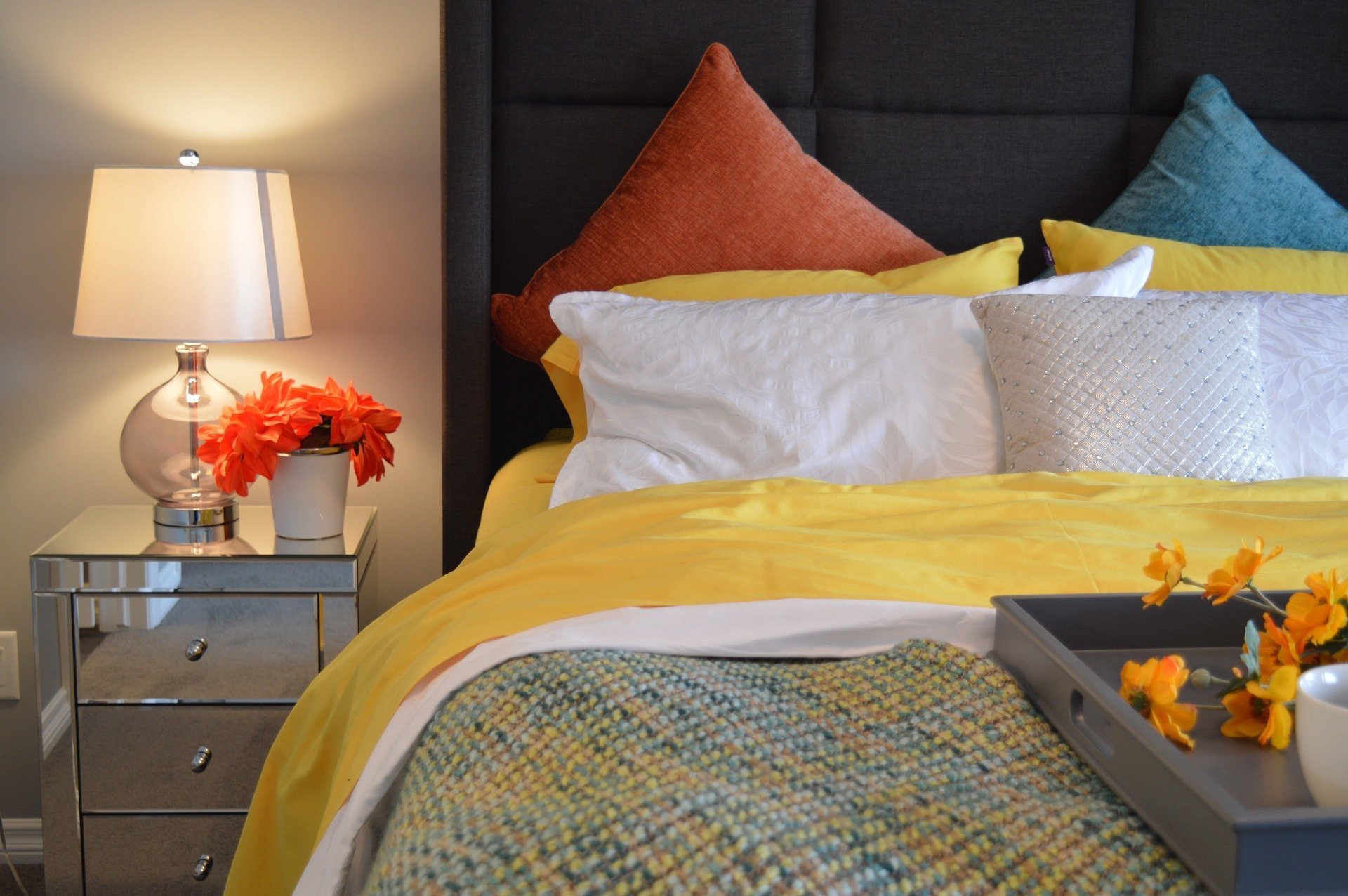
Cleaning Mattress and Sofa
To clean your mattress wash your sheets in water reaching a minimum of 130°F. While the sheets are off vacuum the mattress using the upholstery brush attachment. Keeping a cover on your mattress will extend its life, but you still want to replace it every 7-8 years. Don't forget to rotate or flip your mattress as part of your quarterly cleaning routine. For odors sprinkle baking soda on the mattress and let it sit for a while then vacuum off.
Baking soda can also freshen up sofas. I sprinkle some under the cushions then vacuum up after about half an hour. This is much preferable to spraying with a heavily fragranced spray that just covers up odors with harsh chemicals that contribute to air pollution in your home.
Alcohol/Vodka
Instead of toxic fragrance sprayed around your home in the form of fabric and upholstery cleaners, try mixing your own! My favorite is Pillow Potion by Aura Cacia mixed with cheap vodka and I call it “Sleep Spray” because it promotes relaxation. I typically spray this on our beds and pillows but will often just spray it around the house as I love the way it smells. This spray makes an excellent nontoxic fabric freshener spray.
- 1. 5 cups filtered water
- 1/2 cup cheap vodka or rubbing alcohol (I prefer vodka)
- 10 drops of your favorite essential oils (lavender works great as does citrus blends)
- glass spray bottle (my favorite are these cobalt glass bottles seen in the photos in this post)
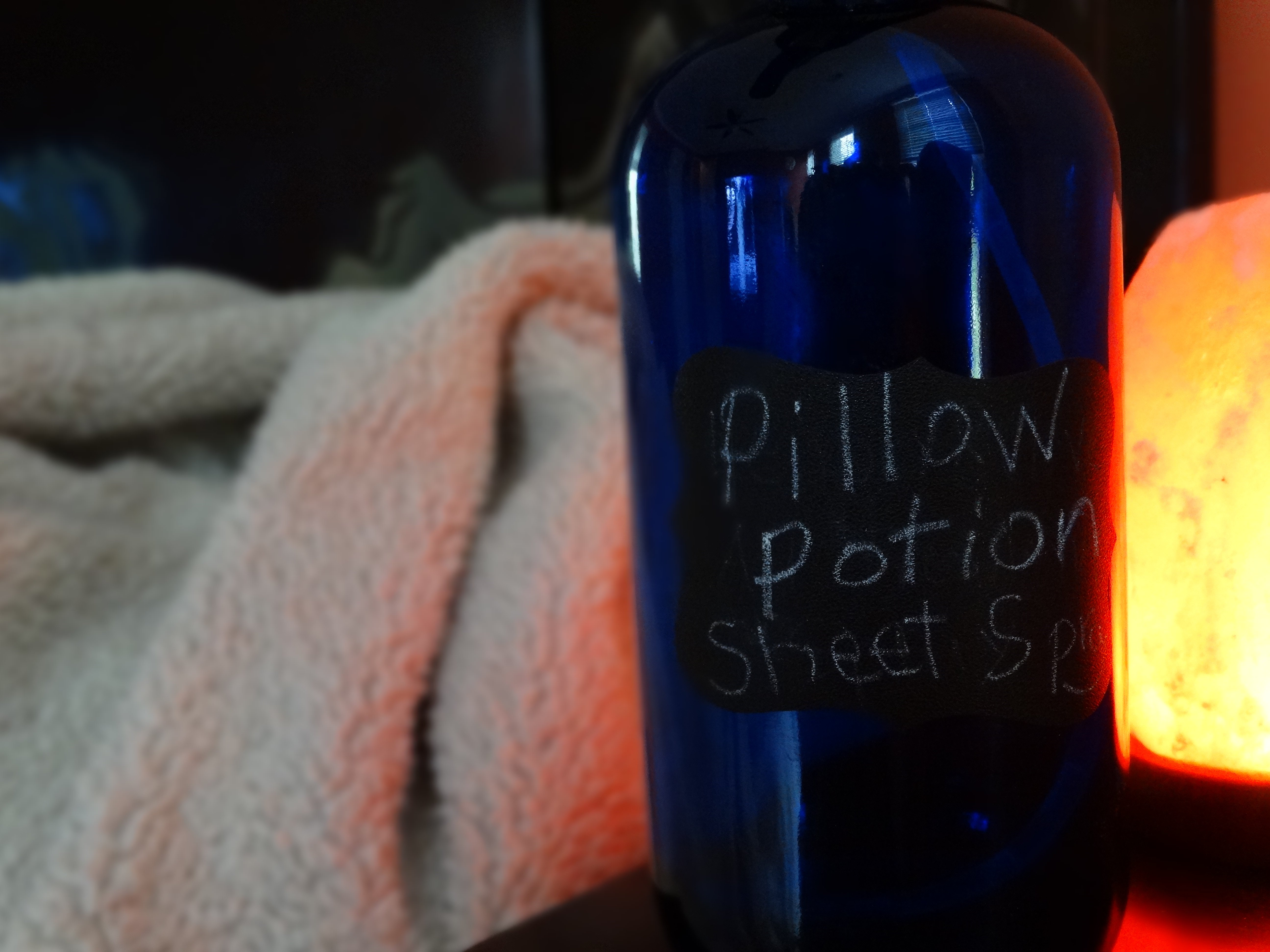
Cleaning Tools
I prefer not to use paper towels or microfiber, although I believe my son has a few microfiber cloths for buffing the car. Instead, I use reusable cloth. My favorite dish drying towel and what I use with my window cleaner are these GOTS-certified organic flour sack dishtowels from Amazon.
If you choose not to make your own cleaners and rather purchase them at least look them up in the EWG Guide to find the least toxic version you can use.
Natural Cleaning Products that are not DIY
Homemade cleaners are not for everyone. While I love the idea of DIY, I don't necessarily have time to make my own natural cleaners. Natural ingredients that can be used “as-is” such as white vinegar and baking soda work for me and have the same cleaning power of conventional cleansers in most cases.
The Organically Clean Home Book has 150 natural cleaning recipes without chemicals for anyone who wants to enjoys making them. For those of us who aren't into making surface cleaners or toilet bowl cleaners, there's always companies like Seventh Generation and places like Thrive Market where we can choose from a wide selection of product to deal with dirt and grime.
- Dropps Laundry Pods and Dishwasher Pods (for those of you who keep telling me you love pods!) are clean, sustainable and eco-friendly – they have a stain remover pod that also tackles odor (for persistent odors I use a dedicated odor remover.)
- We now use an oxidizer for our laundry, it uses ozone to clean the clothing and removes bacteria and any odors. No detergent required!
- In the dryer, we use dryer balls with essential oils for adding a touch of lavender scent to clothing.
Cozi Organizer
Large and small families need Cozi! Keep track of chaotic family life with this FREE app! I use it …
Enviro-Litter-Box
if you have one cat or many, the litter box can get, well, unpleasant. This additive prevents the …
Neato D-Shaped Robot Vacuum
With a brush that’s nearly double the size of those on standard round robot vacuums, Neato gets into …
Wool Dryer Balls
Safer and more effective than dryer sheets filled with toxic chemicals and fragrance. Wool dryer …
This post is dedicated to my daughter Haley – thanks for the inspiration, love!

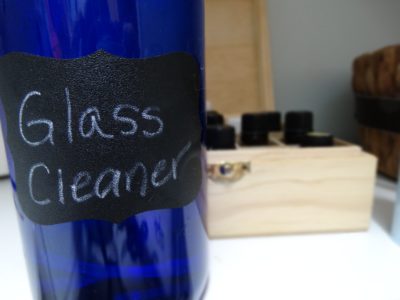

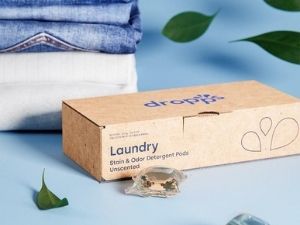
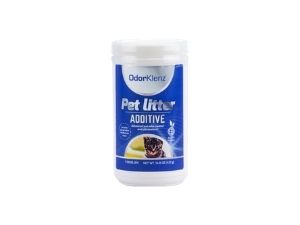
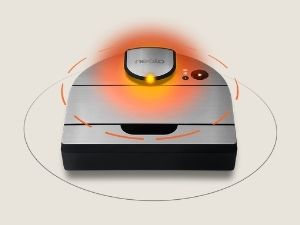
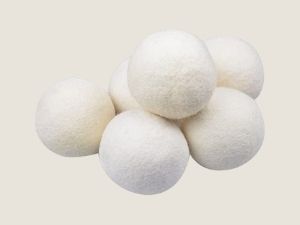
 Do you have a healthy body image?
Do you have a healthy body image?
Leave a Reply
You must be logged in to post a comment.